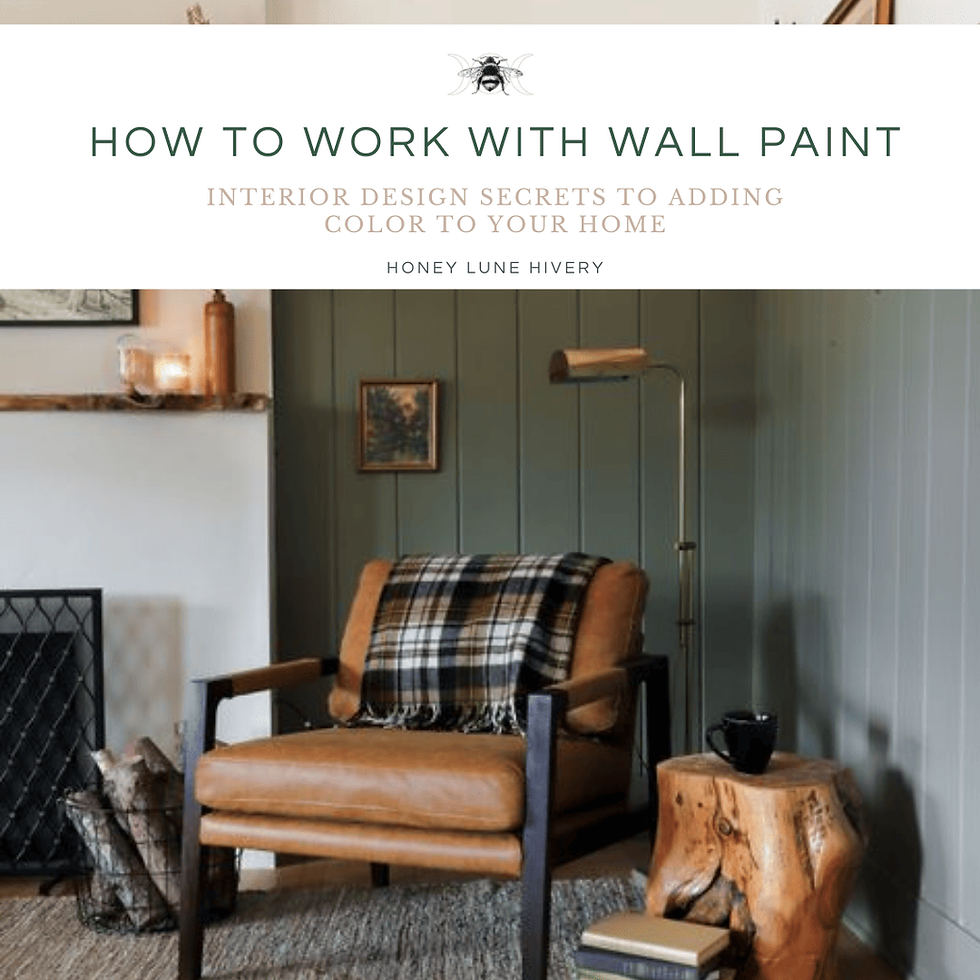
It’s a colorful world out there, so why not bring that color in here. Here meaning your home! One of the easiest, quickest, and cheapest ways to bring in color is through wall paint. In design, it’s usually hard to come across a trifecta like this, but paint has you covered. That’s because paint is relatively inexpensive (about $60 for a can of quality paint), it’s easy to do, and it’s quick (being a weekend project).
However, a lot of us are freaked out when it comes to painting our walls. That’s because paint does make a BIG statement for your space. So maybe you’re not looking for a whole room full of color. Here are some other fun and creative ways to paint your walls with color.
Try the Ceiling
Tired of a white ceiling? Me too. While white ceilings are a classic look, sometimes your space just needs a little more drama. Say hello to the bold and moody ceiling. Despite what you might think, a colorful ceiling can work to ground your room, highlighting the furnishings and finishes in your room. That’s because it ‘caps’ the ceiling height and draws your eye visually to the ground level, where most of our pieces live anyways.
Designer Tip: Try a darker, neutral color such as a black, charcoal, or earthy brown.
Paint your Trim
Okay, this tip isn’t necessarily for your walls but it can add a fun and unique pop of color to your space. Painting your trim a color is like adding a fun border for your room. It’s a subtle yet surprising way to bring in color. A perk of this tip? If you’re a fan of art and décor on your walls, this trick will actually help to frame your white walls more and highlight the art.
Designer Tip: Unless you live in an old Victorian that has separate rooms, you might want to commit to painting all the trim throughout your home for a unified look.
Go Halfsies
Crazy about the color-blocked look? Doing a two-tone application to your walls is a creative way to bring in color while still having the room feel light and bright. It also helps to bring in a design element of adding a chair-rail or wainscoting affect without the hassle or cost of the real deal.
Designer Tip: Instead of going with a ratio of 1:1, try 1:3. Design likes to follow the rule of thirds, so paint 2/3rds of your room with a color and the top third white.
That’s a Wrap

Color-wrapping is like the cool cousin of the accent wall. It works to highlight and draw attention to a particular wall, making it the focal point. Unlike an accent wall, color-wrapping can often go on the ceilings and adjacent walls to ‘frame’ and create a visual color box for a particular arrangement of furniture. It’s a bit more visually dynamic as well, since the color extends to other surfaces and planes in your room.
Make it a Moment
Who doesn’t love a good interior vignette? These curated moments are so magickal in the home and can act to tell a story. However, without a proper backdrop, these moments can sometimes get lost in the movement of the room. That’s why you can add pops of color to these areas to highlight and draw the focus back to these spaces. Whether this be determined by the architecture already, like a fireplace wall or a bookcase niche, or through your own creative methods. Creating painted arches behind dining room sideboards, adding angular accents to corner reading nooks, or sophisticated square framed behind your desk space are just a few examples on the creativity you can have with color.
Other Tips
For the Love of God Prime
When you pick up your paint, don’t forget a can or two of primer. Primer is important to add before the painting of your walls because it will help create an even coat for the new paint to go on top of. This is especially when painting from a darker color to a lighter color, as this paint can sometimes show through without a good primer. Primer is also helpful in lessening the amount of coats of color you’ll need for your walls.
A Finishing Look
As much as the color is important when working with paint, so is the finish. A finish or sheen of paint deals with the light reflection a paint can have, but also the protective qualities. The glossier a finish, the more it can protect the walls and paint by making the clean up process a lot easier.
Something with heavier sheen, like a semi-gloss, is good for baseboards and trim, that can get scuffed with furniture and foot traffic, while a light or no sheen finish, like a matte or flat paint, will be good for the ceiling. A general preference for walls is an egg-shell or satin finish.
If you need help on choosing the perfect paint for your home improvement project, I offer color consultations to help navigate you toward that right color (or colors) for you and your space. Remember, it is a colorful world of choices and combinations.
Happy Painting!
Your Holistic Home Helper,
Marissa





Comments